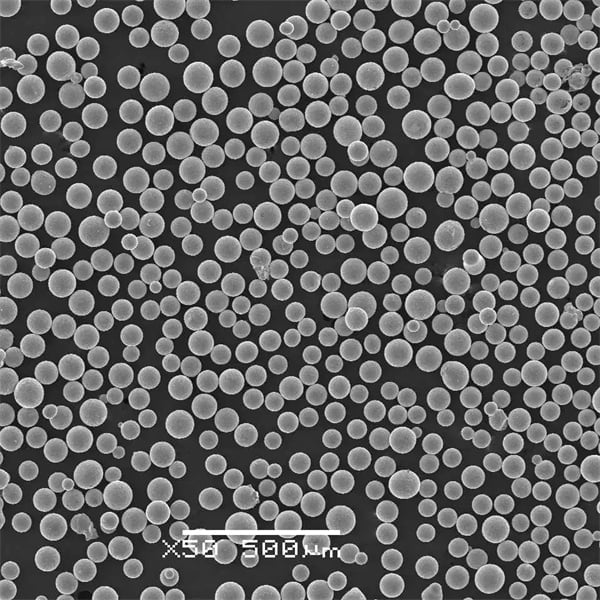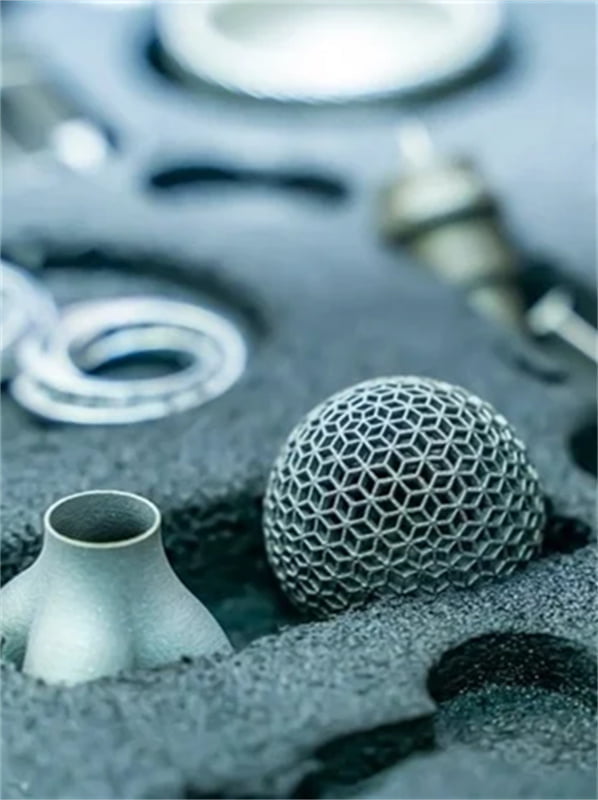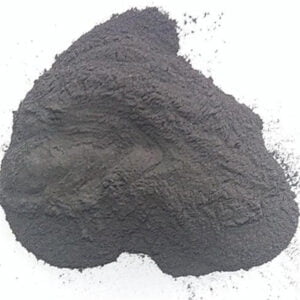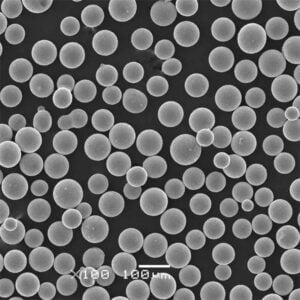Podrobné vysvětlení plazmového atomizovaného 3D tisku kovového prášku
Obsah
Představte si, že držíte v ruce budoucnost. Ne křišťálovou kouli, ale malou, nenápadnou hromádku. rozprašování plazmou kovový prášek. Tyto mikroskopické zázraky, které se zrodily z ohnivého objetí plazmy a roztaveného kovu, jsou stavebními kameny nesčetných průmyslových odvětví a formují vše od elegantních křivek letadel až po složité součásti lékařských přístrojů.
Co přesně je ale plazmová atomizace a jak se při ní mění roztavený kov na tyto účinné prášky? Připoutejte se, protože se chystáme proniknout do fascinujícího světa této transformační technologie.
Co je plazmová atomizace?
Plazmová atomizace je v podstatě technika výroby kovového prášku který využívá obrovské teplo a sílu plazma. Plazma, často označované jako čtvrté skupenství hmoty, je přeplněný plyn složený z. ionizované atomy a volné elektrony. Tento přehřátý stav umožňuje snadné tavení i těch nejžáruvzdornějších kovů s neuvěřitelně vysokým bodem tání.
Zde je rozpis postupu:
- Příprava surovin: Vybraný kov se přemění na surovinu, obvykle kapky roztaveného kovu nebo kovové dráty.
- Generování plazmy: Vysokotlaký plyn, jako je argon nebo helium, prochází elektrickým obloukem, čímž se vytváří intenzivně horký plazmový hořák.
- Atomizace: Do proudu plazmatu se vstřikuje roztavená kovová surovina, čímž dochází k jejímu fragmentovat a rychle tuhnout na malé kulovité částice.
- Sbírka prášků: Ochlazené kovové částice se shromažďují pomocí klasifikační systém k dosažení požadované distribuce velikosti částic.

Mnoho tváří prášků atomizovaných plazmatem:
Plazmová atomizace není univerzální proces. V závislosti na požadovaných vlastnostech a aplikacích lze použít různé typy atomizace. modely z kovového prášku a každá z nich má jedinečné výhody:
- Titanové prášky: Proslulé svými vysoký poměr pevnosti a hmotnosti, vynikající odolnost proti korozi a biokompatibilita., titanové prášky nacházejí široké uplatnění v letectví, lékařské implantáty a sportovní zboží..
- Niklové prášky: Nabízí kombinaci pevnost, tažnost a výkon při vysokých teplotách., práškový nikl má zásadní význam pro aplikace v oblasti chemické zpracování, těžba ropy a zemního plynu a výroba energie..
- Kobaltové prášky: Ceněné pro své magnetické vlastnosti, odolnost proti opotřebení a pevnost při vysokých teplotách., kobaltové prášky jsou důležité pro řezné nástroje, lopatky turbín a aplikace pro tvrdé povrchy..
- Prášky z nerezové oceli: Jak již název napovídá, prášky z nerezové oceli nabízejí vynikající odolnost proti korozi vedle dobré mechanické vlastnosti, takže jsou ideální pro použití v zpracování potravin, zdravotnických prostředků a automobilových součástek..
- Hliníkové prášky: Lehké a vysoce vodivé hliníkové prášky jsou vyhledávány v oblasti letecký, automobilový a elektronický průmysl. pro jejich schopnost snížení hmotnosti a zvýšení vodivosti.
- Měděné prášky: Může se pochlubit výjimečnou elektrická a tepelná vodivost, měděné prášky se používají v elektrické komponenty, chladiče a aplikace tepelného managementu..
- Železné prášky: Nabídka vysoká magnetická propustnost a dobrá obrobitelnost, práškové železo je pracovním koněm. prášková metalurgie, používané v různých komponentech od převodovek a ložisek až po filtry a magnetická jádra.
- Inconel prášky: Prášky Inconel, které patří do skupiny nikl-chromových superslitin, nabízejí vynikající pevnost při vysokých teplotách, odolnost proti oxidaci a tečení., což z nich činí preferovanou volbu pro proudové motory, raketové motory a zařízení pro zpracování chemikálií..
- Wolframové prášky: Proslulé svými výjimečná tvrdost, vysoký bod tání a dobrá odolnost proti opotřebení., wolframové prášky se používají v řezné nástroje, svařovací elektrody a pancéřové střely..
- Prášky molybdenu: Nabízí vynikající vysokoteplotní stabilita, dobrá odolnost proti korozi a vysoký bod tání., molybdenový prášek se používá v elektronické součástky, topná tělesa a kelímky..
Toto je jen letmý pohled do rozmanitého světa plazmových atomizovaných zařízení. kovové prášky. Každý typ má své vlastní jedinečné vlastnosti a vyhovuje specifickým potřebám odvětví.
Síla plazmatu: Uvolnění potenciálu kovových prášků
Kromě rozmanité škály kovových prášků nabízí plazmová atomizace několik výhod, které ji odlišují od jiných metod výroby kovových prášků:
- Vysoce sférické částice: Plazmová atomizace vytváří téměř dokonale sférické částice. s minimem satelitních částic (tavené nebo částečně tavené částice). To znamená, že lepší tekutost, hustota balení a tisknutelnost. na adrese aditivní výroba aplikace.
- Vynikající čistota: Vysoké teploty a rychlé tuhnutí dosažené během plazmové atomizace mají za následek. minimální zachycování plynů a snížené množství nečistot., což vede k kvalitnější prášky se zlepšenými mechanickými vlastnostmi.
Množství aplikací: Kde září prášky rozprašované plazmou
Všestrannost kovových prášků atomizovaných plazmou přesahuje jejich rozmanité materiálové vlastnosti. Tyto mikroskopické zázraky nacházejí uplatnění v mnoha průmyslových odvětvích a fascinujícím způsobem utvářejí svět kolem nás:
1. Aditivní výroba (AM): Technologie AM, často označovaná jako 3D tisk, přináší revoluci do výroby složitých předmětů. Prášky rozprašované plazmou jsou díky své vynikající tekutosti a téměř dokonalé sféricitě. ideální surovina pro různé techniky AM, včetně laserové tavení, tavení elektronovým paprskem a tryskání pojiva.. Tyto prášky umožňují vytvářet složité součásti s snížení množství odpadu, flexibilita designu a lehká konstrukce..
2. Letecký a kosmický průmysl: Neúnavná snaha o lehké, vysoce pevné materiály pro letadla a vesmírné lodě vedl letecký průmysl k využití prášků rozprašovaných plazmou. Titanové a hliníkové prášky, proslulé svými poměr pevnosti a hmotnosti, jsou hojně využívány v konstrukce letadel, součásti motorů a lehké části kosmických lodí.. Navíc, prášky z nadslitin na bázi niklu a kobaltu najít aplikaci v lopatky turbín a součásti raketových motorů. díky své výjimečnosti pevnost při vysokých teplotách a odolnost proti oxidaci.
3. Zdravotnické prostředky: Zdravotnictví se ve velké míře opírá o materiály, které jsou zároveň jsou biokompatibilní a mají vynikající mechanické vlastnosti. Rozprašování plazmou titanové a tantalové prášky dokonale vyhovuje, protože se používá v kloubní náhrady, zubní implantáty a chirurgické nástroje.. Jejich vynikající biokompatibilita minimalizuje riziko odmítnutí tělem, zatímco jejich pevnost a odolnost zajistit dlouhodobou funkčnost implantátů.
4. Automobilový průmysl: Hledání palivová účinnost a lehká vozidla přivedla automobilový průmysl k inovativním materiálům. Hliníkové a ocelové prášky vyráběné plazmovou atomizací se stále častěji využívají v oblasti automobilové komponenty jako panely karoserie, bloky motoru a díly zavěšení. Tyto prášky nabízejí snížení hmotnosti výhody při zachování požadovaných síla a výkon.
5. Odvětví energetiky: Stále rostoucí poptávka po čisté energii otevřela dveře pro plazmové prášky v energetickém sektoru. Prášky niklu a kobaltu jsou klíčové součásti elektrody palivových článků, které hrají zásadní roli při přeměně chemické energie na elektrickou. Kromě toho, wolframové a molybdenové prášky najít aplikaci v vysokoteplotní komponenty v rámci jaderné elektrárny.
6. Další aplikace: Dosah prášků rozprašovaných plazmou přesahuje rámec výše uvedených průmyslových odvětví. Tyto univerzální prášky se používají v různých dalších aplikacích, včetně:
- Tepelné stříkání: Povrchová úprava povrchů pro odolnost proti opotřebení, ochrana proti korozi a tepelný management..
- Vstřikování kovů (MIM): Výroba složitých kovových součástí s téměř síťovým tvarem a složitými detaily.
- Pájení a svařování: Spojování různorodých materiálů pomocí prášků s vysokým bodem tání.
- Katalyzátory: Zaměstnávání platinové a palladiové prášky ke snížení škodlivých emisí ve výfukových systémech automobilů.
Zvažování výhod a nevýhod
Plazmová atomizace sice nabízí řadu výhod, ale je důležité si uvědomit omezení spojená s touto technologií:
Klady:
- Vysoce čisté a sférické prášky: To vede ke zlepšení výkonu v různých aplikacích.
- Široká škála materiálů: Uspokojování potřeb různých průmyslových odvětví.
- Kontrola velikosti jemných částic: Umožňuje vytvářet složité prvky a součásti s vysokým rozlišením.
Nevýhody:
- Vysoká spotřeba energie: Tento proces vyžaduje značné množství energie, což má dopad na životní prostředí a výrobní náklady.
- Složité a drahé vybavení: Instalace a údržba zařízení pro plazmovou atomizaci vyžaduje značné investice.
- Omezená výrobní kapacita: V porovnání s jinými metodami výroby prášku má plazmová atomizace často nižší výrobní rychlost.
Nalezení správné plazmové atomizace Kovový prášek Dodavatel
Na trhu je nepřeberné množství dodavatelů kovových prášků pro plazmovou atomizaci a výběr toho správného může být náročný. Zde je několik klíčových faktorů, které je třeba zvážit:
- Dostupnost materiálu: Ujistěte se, že dodavatel nabízí konkrétní kovový prášek, který požadujete.
- Specifikace prášku: Ověřte, zda velikost, morfologie a čistota prášku splňují požadavky vaší aplikace.
- Kontrola kvality: Vyberte si dodavatele s robustním systémem kontroly kvality, který zajistí stálou a spolehlivou kvalitu prášku.
- Technické znalosti: Vyberte si dodavatele s týmem odborníků, kteří vám poskytnou technickou podporu a poradenství.
- Ceny a dodací lhůty: Porovnejte ceny a dodací lhůty různých dodavatelů, abyste našli nejvhodnější řešení pro svůj rozpočet a časový plán projektu.
Demystifikace nákladů na plazmou atomizovaný kovový prášek
Stejně jako u jiných produktů, i u plazmových rozprašovačů je cena kovové prášky se liší v závislosti na několika faktorech:
1. Materiál: Typ použitého kovu je významným faktorem ovlivňujícím náklady. Kovy vzácných zemin, jako je tantal, a drahé kovy, jako je platina. mají obecně vyšší ceny ve srovnání s běžné kovy jako železo a hliník. Tyto rozdíly odrážejí vzácnost, obtížnost těžby a celkové náklady na zpracování surovin.
2. Specifikace prášku: Požadované velikost, morfologie a čistota částic významně ovlivnit náklady. Jemnější prášky, prášky se specifickou morfologií (např. vysoce sférické) a prášky s vyšší čistotou vyžadují složitější kroky zpracování a přísnější opatření pro kontrolu kvality, což vede k vyšší ceně. vyšší cena.
3. Objem: Stejně jako u většiny produktů, hromadné nákupy jsou obvykle cenově výhodné ve srovnání s menšími zakázkami. To je způsobeno úsporami z rozsahu, kdy výrobní náklady na jednotku klesají s rostoucím celkovým objemem.
4. Dodavatel: Různí dodavatelé mohou mít různé cenové struktury založené na jejich výrobní kapacita, režijní náklady a zeměpisná poloha.. Porovnání nabídek od více renomovaných dodavatelů je zásadní pro zajištění nejlepší ceny za váš rozpočet.
Zde je názorný příklad:
Kilogram komerčně čistý titanový prášek s průměrnou velikostí částic 50 mikrometrů by mohla stát přibližně. $50-70, zatímco stejné množství vysoce čistý, téměř sférický titanový prášek s jemnějšími částicemi o velikosti 10 mikrometrů by mohly stát až $100-150. Naproti tomu kilogram železný prášek s většími částicemi o velikosti 100 mikrometrů by se mohly prodávat za cenu až 100 EUR. $5-10.
Je důležité si uvědomit, že se jedná pouze o odhadované rozmezí a skutečná cena se může lišit v závislosti na konkrétních výše uvedených faktorech.

FAQ
Otázka: Jaké jsou výhody kovových prášků rozprašovaných plazmou ve srovnání s jinými metodami výroby prášků?
Odpověď: Plazmová atomizace nabízí několik výhod, včetně:
- Vysoce sférické částice: Lepší tekutost, hustota balení a tisknutelnost v aplikacích AM.
- Vynikající čistota: Minimální zachycování plynů a snížení množství nečistot, což vede k vyšší kvalitě prášků.
- Kontrola velikosti jemných částic: Umožňuje vytvářet složité prvky a součásti s vysokým rozlišením.
Otázka: Jaká jsou omezení kovových prášků rozprašovaných plazmou?
Odpověď: Mezi omezení plazmové atomizace patří:
- Vysoká spotřeba energie: ovlivňuje ekologickou stopu a výrobní náklady.
- Složité a drahé vybavení: Vyžaduje značné investice do nastavení a údržby.
- Omezená výrobní kapacita: V porovnání s jinými metodami výroby prášku má plazmová atomizace často nižší výrobní rychlost.
Otázka: Jak si mám vybrat správného dodavatele kovového prášku rozprašovaného plazmou?
Odpověď: Při výběru dodavatele zvažte následující faktory:
- Dostupnost materiálu: Ujistěte se, že nabízejí konkrétní kovový prášek, který požadujete.
- Specifikace prášku: Ověřte, zda prášek splňuje požadavky vaší aplikace.
- Kontrola kvality: Vyberte si dodavatele s důkladným systémem kontroly kvality.
- Technické znalosti: Vyberte si dodavatele s týmem odborníků, kteří vám poskytnou podporu.
- Ceny a dodací lhůty: Porovnejte ceny a dodací lhůty různých dodavatelů.
Otázka: Jaká budoucnost čeká technologii plazmové atomizace?
Odpověď: Budoucnost plazmové atomizace je slibná, probíhající výzkum se zaměřuje na:
- Snížení spotřeby energie: Zkoumání alternativních zdrojů energie a optimalizace procesů.
- Vývoj nových materiálů: Přizpůsobení vlastností prášku pro konkrétní aplikace.
- Zvyšování výrobních sazeb: zavádění technologického pokroku pro zvýšení produktivity.
Sdílet na
MET3DP Technology Co., LTD je předním poskytovatelem řešení aditivní výroby se sídlem v Qingdao v Číně. Naše společnost se specializuje na zařízení pro 3D tisk a vysoce výkonné kovové prášky pro průmyslové aplikace.
Dotaz k získání nejlepší ceny a přizpůsobeného řešení pro vaše podnikání!
Související články

Vysoce výkonné segmenty lopatek trysek: Revoluce v účinnosti turbín díky 3D tisku z kovu
Přečtěte si více "O Met3DP
Nedávná aktualizace
Náš produkt
KONTAKTUJTE NÁS
Nějaké otázky? Pošlete nám zprávu hned teď! Po obdržení vaší zprávy obsloužíme vaši žádost s celým týmem.

Kovové prášky pro 3D tisk a aditivní výrobu
SPOLEČNOST
PRODUKT
kontaktní informace
- Město Qingdao, Shandong, Čína
- [email protected]
- [email protected]
- +86 19116340731

















